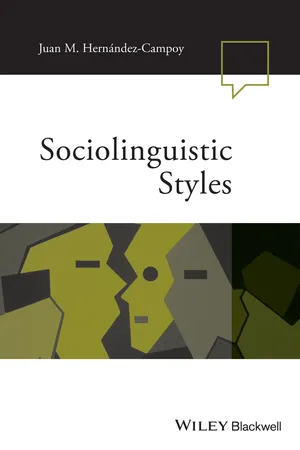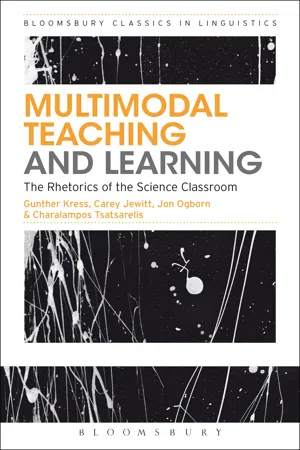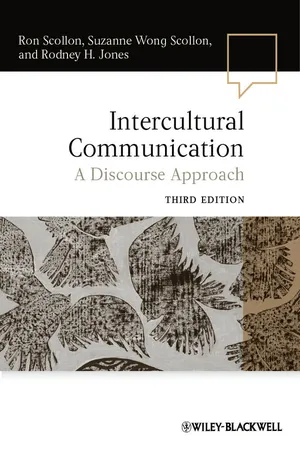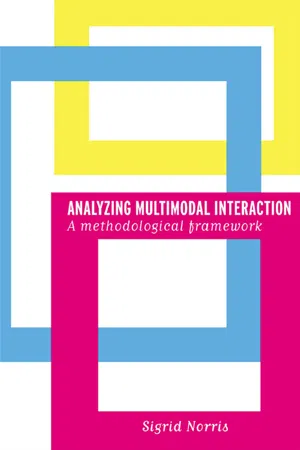Languages & Linguistics
Rhetorical Modes
Rhetorical modes refer to the different types of writing or speaking that are used to communicate information and ideas. These modes include narration, description, exposition, and argumentation, each serving a specific purpose in conveying a message to an audience. By understanding and employing rhetorical modes effectively, writers and speakers can enhance the clarity and impact of their communication.
Written by Perlego with AI-assistance
Related key terms
6 Key excerpts on "Rhetorical Modes"
- eBook - ePub
Writing Put to the Test
Teaching for the High Stakes Essay
- Amy Benjamin(Author)
- 2013(Publication Date)
- Routledge(Publisher)
IIRhetorical Modes
Passage contains an image
5
Teaching Writing Through Rhetorical Modes
Because much of our understanding of the world comes through the recognition of patterns, it is extremely helpful to understand how writing topics fall into the following major Rhetorical Modes: ♦ Narration ♦ Description ♦ Cause and effect ♦ Classification and division ♦ Comparison/contrast It should be noted that some writing texts condense these categories onto only four Rhetorical Modes: narration, description, exposition, and persuasion.Each rhetorical mode accomplishes its own purpose. Each comes with its own structure and language. Most text is organized around a predominant rhetorical mode, supported by at least one secondary mode. For example, narration often partners up with description; definition partners with exemplification.Teaching writing through the Rhetorical Modes, which are also called discourse modes, goes way back to Aristotle. However, this paradigm for teaching writing lost its place at the table of writing instruction in the 1970s and 1980s when “process pedagogy” came into favor. Actually, there’s no reason why instruction in the Rhetorical Modes needs to compete with writing process instruction: both can be mutually supportive. The advantage of teaching writing through the Rhetorical Modes, as we will see, is that once we know what mode we’re in, we can build within an existing structure that we already understand.Karen Gocsik, executive director of the writing program at Dartmouth College, says this about discourse mode pedagogy:[M]odes of discourse instruction can be used to lead students systematically through a hierarchical system of cognitive functions. In these classrooms, professors develop assignments that progress through the modes, moving students from the personal narrative to the analytical argument, and from simple organizational strategies that are chronological and spatial, to more complex organizational strategies that are more formally logical. In this way, modes of discourse instruction sharpen students’ critical and analytical skills. - eBook - ePub
- Juan Manuel Hernández-Campoy(Author)
- 2016(Publication Date)
- Wiley-Blackwell(Publisher)
Rooted in classical traditions but profiting from modern refinements in psychology, semantics, motivational research, and other behavioral sciences, rhetoric is currently viewed as the intentional use of language to influence an audience, and for this reason there is, as Richards (1936) suggested, a focus on the psychology of the listener “and its broadening of the function of rhetoric to include enlightening the understanding, pleasing the imagination, moving the passions, and influencing the will” (Corbett and Connors 1999: 538). Every use of language – written or spoken – is a rhetorical act, because all communication is inherently rhetorical and intentional: there is a message to transmit or a specific goal to achieve. For Burke (1962), “appeal” and “identification” are the essence of communication, since speakers must identify themselves with the audience, becoming an integral part of it, through deliberately designed verbal persuasion. Thus, styles constitute a mode of identification through speakers’ conscious or unconscious attempts to suit their language to the requirements of the audience. Additionally, Reddy’s (1979) conduit model of communication proposed a teleological model rooted in classical rhetoric that stresses the intentional nature – or the perlocutionary effect – of communication, alluding to the psychological consequences of the speech act: the aim of the addresser (“sender”) with a message (or utterance) is to cause an effect in the addressee (“receiver”). Similarly, following Reddy, Berge (2001: 23) defines rhetoric as “a theory of communication that seeks to find the quality which makes it possible for an addresser to persuade or convince his addressee about something.”With a focus on “the pervasiveness of persuasiveness” in our occupational, social, and private lives, Herrick (2012) explores the universal nature of persuasion through rhetoric as a technique for gaining compliance in a world in which human beings are rhetorical beings. Individuals are engaged in rhetoric every time they express emotions and thoughts to other people with the aim of influencing them:Outside the arena of professional endeavors, we are perpetual persuaders in our personal relationships. Who doesn’t make arguments, advance opinions, and seek compliance from friends? Moreover, we typically engage in all these persuasive activities without thinking we are doing anything wrong. In fact, it is difficult not to persuade. We also engage in the practice on almost a daily basis in our interactions with friends, colleagues at work, or members of our family. We may attempt to influence friends or family members to adopt our political views; we will happily argue the merits of a movie we like; we are - eBook - ePub
Multimodal Teaching and Learning
The Rhetorics of the Science Classroom
- Gunther Kress, Carey Jewitt, Jon Ogborn, Tsatsarelis Charalampos(Authors)
- 2014(Publication Date)
- Bloomsbury Academic(Publisher)
stars) Reconstituting students’ identity (e.g. learner, expert, young scientist) Rhetorical orchestration of meaning The analysis in terms of rhetorical frames was applied to lessons to produce a map of the shifts in rhetoric across the lesson and series of lessons so as to reveal their rhetorical architecture. Mapping the rhetorical frames in this way enabled us (i) to describe instances of how rhetoric is constructed during a lesson and series of lessons and show the cumulative effect of rhetorical framing; and (ii) to explore how teachers and students differ in their organization of rhetorical frames, that is, in the rhetorical architectures of different classrooms, and how these realize different (rhetorical) meanings and effects. As well as giving attention to how each mode makes meaning by itself, our aim was to identify the ways in which different modes of communication contribute to the rhetorical orchestration of meaning in the science classroom. We wish to be able to describe how teachers use image, action, manipulation of objects, speech, and so on to construct the entities of the science classroom, and how they realize other rhetorical functions in science lessons. From our analysis it is clear that each mode plays a distinct and different role in the realization of these rhetorical functions (as in our example of the visualization of the entity ‘blood’). All the modes are jointly orchestrated across a lesson and across a series of lessons in order to build up meaning over time. In this way, we see meaning as emerging from a process of interaction, contrast and conjunction of the modes - eBook - ePub
- Tonya Krouse, Tamara F. O'Callaghan(Authors)
- 2020(Publication Date)
- Bloomsbury Academic(Publisher)
Perhaps one of the most famous theoretical foundations for this work is Freire’s Pedagogy of the Oppressed (1968), which argues for a problem-posing method of education rooted in dialogic exchange in order to give students ownership over what they learn and to promote liberation through self-expression. Scholars who address topics connected to social justice see Rhetoric and Composition as a field of English Studies with activist potential to assist in a broader project of advancing values of inclusion and equality. Multimodal Composition Just as scholars of digital rhetoric are interested in analyzing texts that are produced in a range of formats, scholars of multimodal composition are interested in studying those processes of composing texts in different “modes” including but not limited to written language—such as audio, video, photographs, or drawings, to give just some examples. Most notably, scholars like Cheryl E. Ball have worked to establish how composition across media and platforms can assist student learning. These scholars also assert the value of webtexts, collaborative digital learning spaces such as wiki s or blogs, and other digital environments for expression. Scholars of multimodal composition believe that the work of Rhetoric and Composition centers not just on verbal or linguistic literacy but also on literacy across a range of communication “modes,” which may include digital modes but need not do so. Any text that engages multiple modes of communication—even a medieval manuscript with illuminations—can be considered multimodal. Additionally, multimodal composition does not necessarily mean multimedia composition, since it is possible to compose across modes of communication without including different media forms - eBook - ePub
Intercultural Communication
A Discourse Approach
- Ron Scollon, Suzanne Wong Scollon, Rodney H. Jones(Authors)
- 2011(Publication Date)
- Wiley-Blackwell(Publisher)
The concept of mode as we are using it here should not be confused with the concept of modality in grammar which we briefly touched upon in chapters 4 and 6. What we mean by mode here is any conventionally recognized semiotic system such as speech, writing, color, taste, or the design of images. Some modes, such as speech, posture, gaze, and gesture, can be considered “embodied modes” in that we must use our physical bodies to produce them. Others like images, writing, and architectural layout can be considered “disembodied modes.” Different modes allow us to make different kinds of meaning. There are things that we can express in pictures, for instance, that we cannot express in words, and vice versa. In other words, different modes bring to communication different sets of “affordances” and “constraints.” From the perspective of interdiscourse communication, the important thing about modes of communication is that different discourse systems might favor different modes or combinations of modes, and that they might use and interpret these modes differently.The fact that different discourse systems might favor different modes of communication is no small matter. Since the mode we use affects both how we can communicate and what we can communicate, modes of communication can have a profound effect on how we view the world and how we organize our social relationships. Perhaps the best example of this is the distinction between what have been called “oral cultures” and “literate cultures.” According to Walter Ong (1982), the shift from oral communication to communication dominated by writing engendered fundamental changes in the way people thought and organized their social relationships. While orality favored the development of faculties of memory and an orientation towards discourse as something social, immediately engaging, and even sacred, literacy allowed people to generate ideas, store them, and retrieve them as needed across time in a highly efficient and accurate way, giving rise to modes of thinking favoring abstract reasoning and problem solving and making possible advances in science, philosophy, history, and politics. New technologies like television and radio, Ong further argues, are promoting a new kind of orality, which he calls “secondary orality” in which some of the immediacy and interactivity of oral modes of communication are again becoming central. - eBook - ePub
Analyzing Multimodal Interaction
A Methodological Framework
- Sigrid Norris(Author)
- 2004(Publication Date)
- Routledge(Publisher)
A system of representation — a writing system, for example — is usually thought of as a given system that exists in and by itself once it is developed. While such a system changes over time, we can describe the system in the form of dictionaries and grammars, showing the rules and regularities that exist. Taking this thought further, we could describe systems of representation like gesture, gaze, layout, etc. in a similar way to a written language, by developing certain dictionaries and grammars of these communicative modes.Communicative modes and interaction
When observing an interaction and trying to discern all of the communicative modes that the individuals are utilizing, we soon notice that this is a rather overwhelming task. People move their bodies, hands, arms, and heads, and while the observer may try to understand the content of what is being spoken, they have already missed many important messages which each speaker is sending — intentionally or not — and the other speaker is reacting to through other modes. Yet, a multimodal interac-tional analysis is not as impossible as one may think. First, the analyst needs to become skilled at distinguishing one communicative mode from others. Then the analyst is ready to investigate how modes play together in interaction.In this chapter, I give an overview of an array of selected communicative modes. These selections are by no means meant as a complete list, as there are many communicative modes that I do not address here, like facial expression, dress, object handling, and color.Each selected mode is described in a separate section, giving the reader the opportunity to concentrate on one mode at a time. The first nine sections comprise the embodied and disembodied modes of communication that I discuss in this book, and the tenth section shows how all of these communicative modes play together in interaction.In the first part of each section, I describe some function and/or regularity of a communicative mode, which is of particular interest to the study of interaction. Then, in the second part of each section, I draw on our knowledge about the system of representation, and illuminate it with a real-time example.
Index pages curate the most relevant extracts from our library of academic textbooks. They’ve been created using an in-house natural language model (NLM), each adding context and meaning to key research topics.





